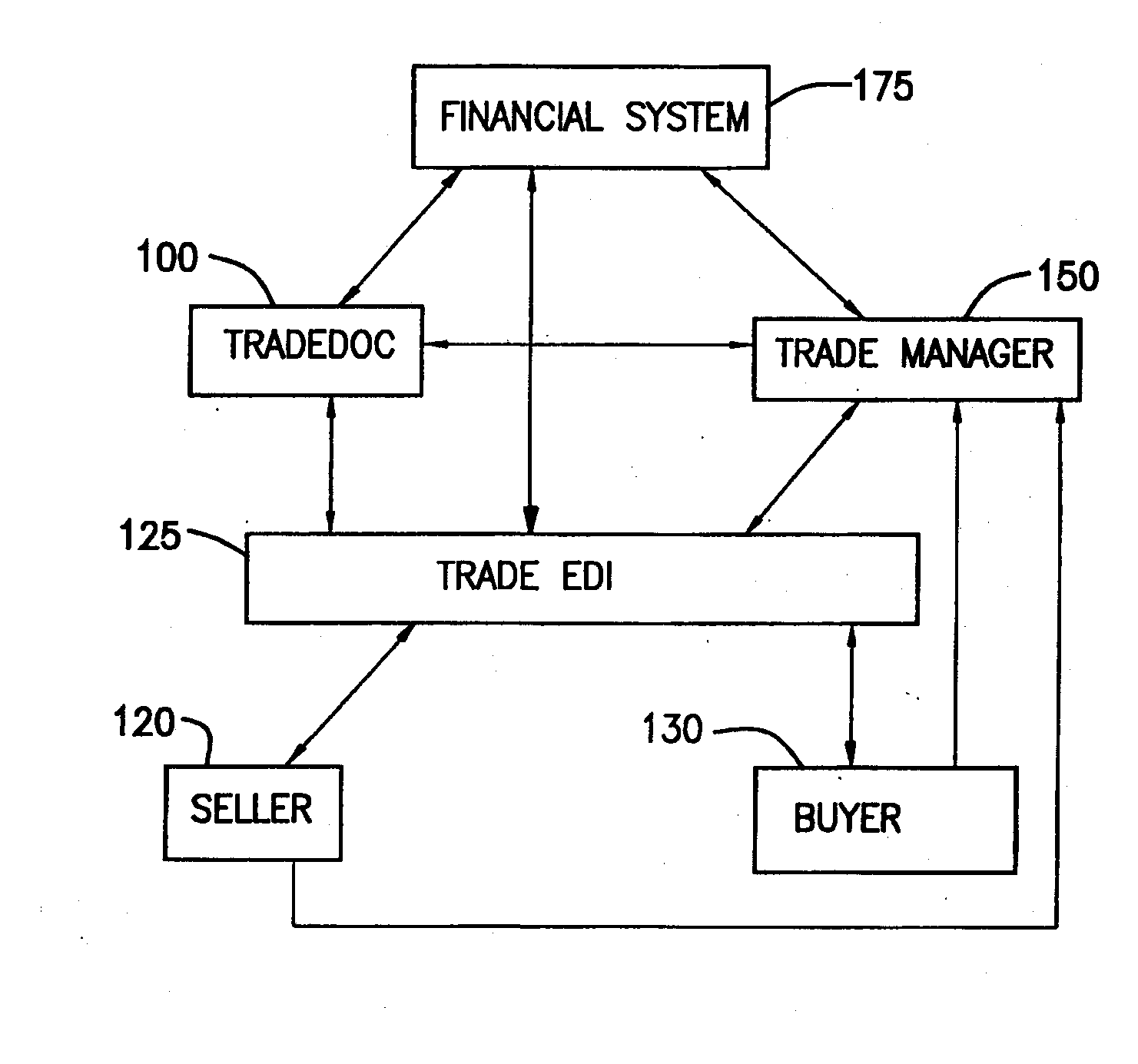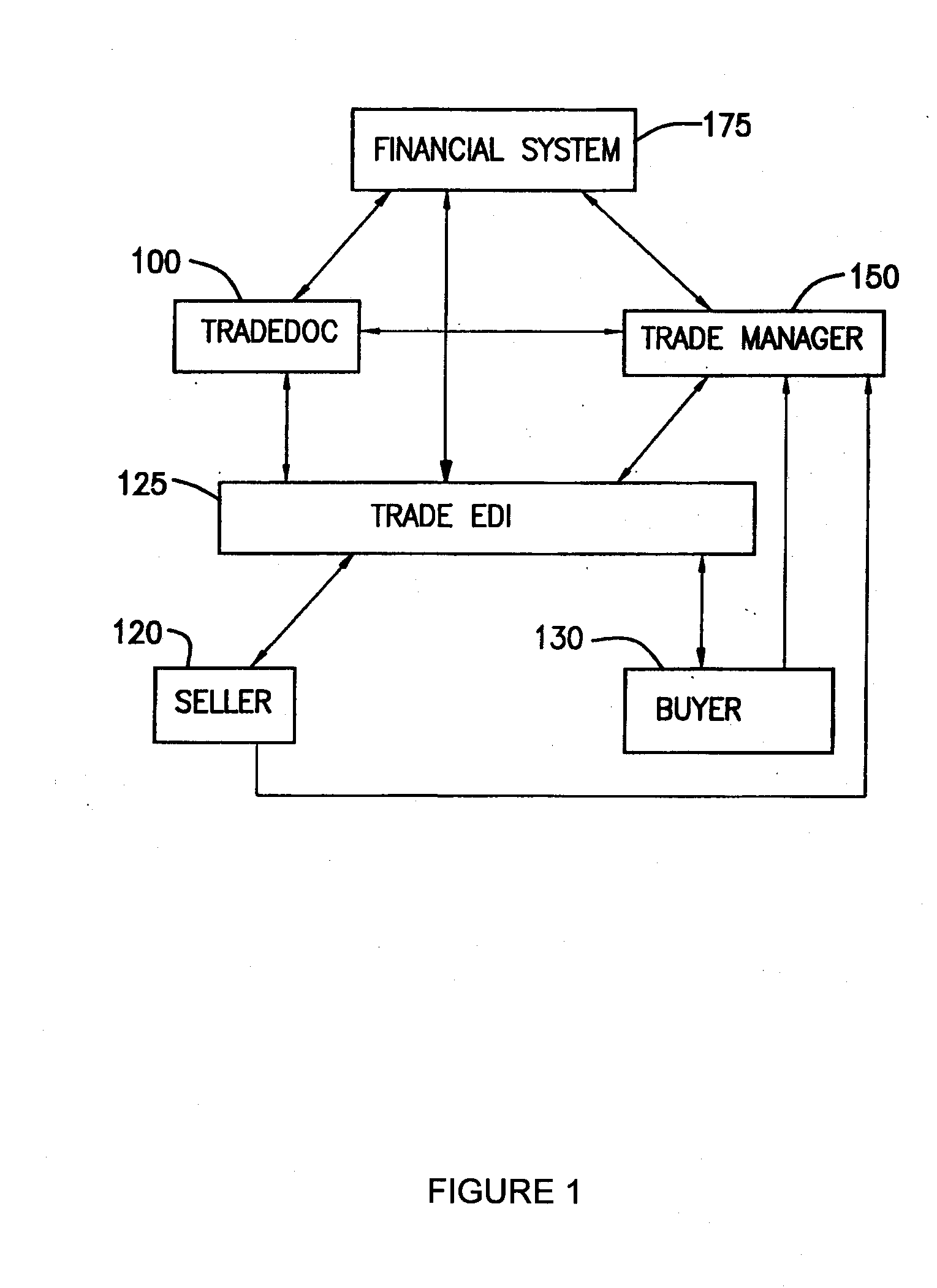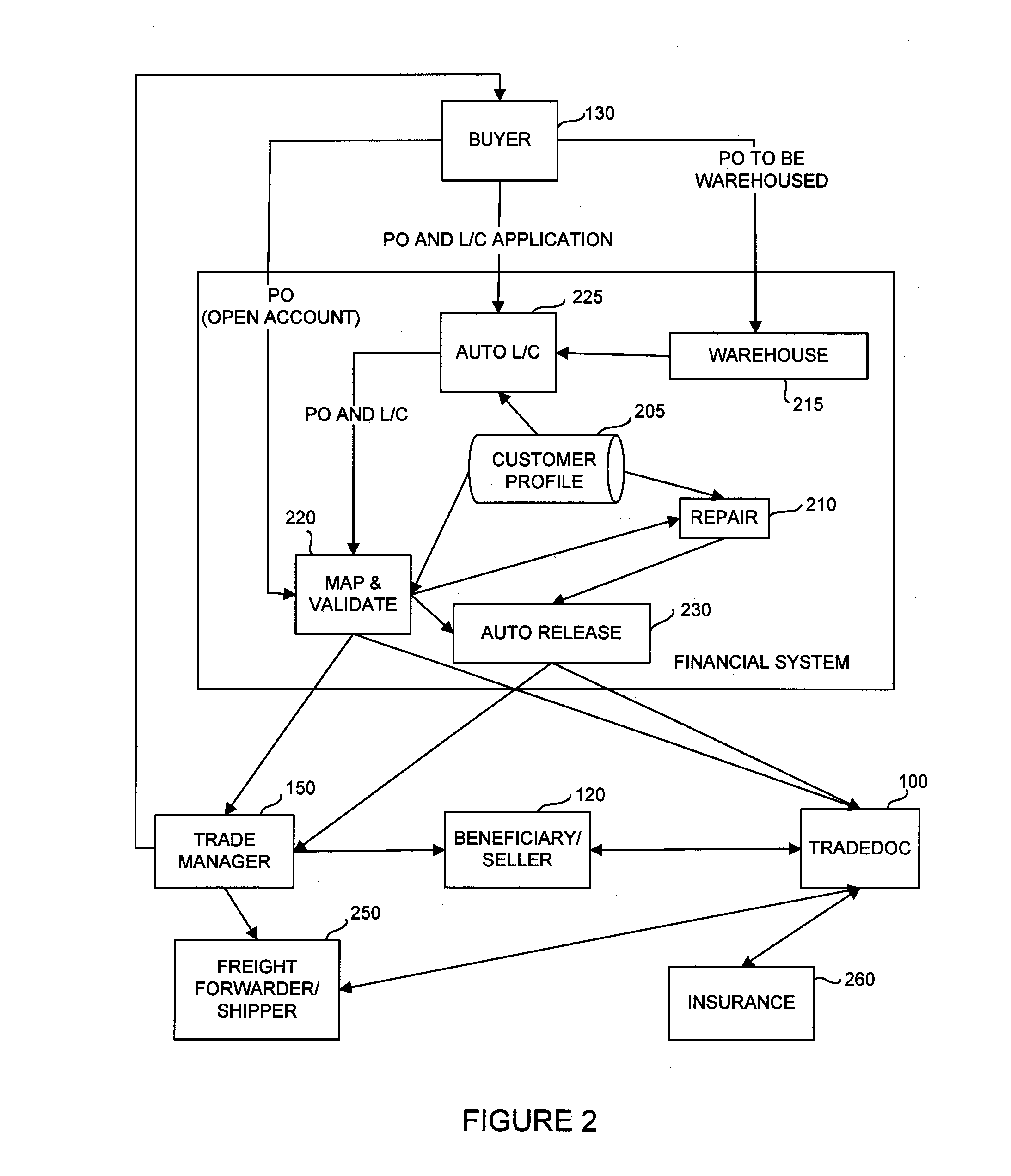System And Method For Integrating Trading Operations Including The Generation, Processing And Tracking of Trade Documents
a trading operation and document processing technology, applied in the field of system and method for managing trading operations, can solve the problems of manual labor, prone to errors and gross inefficiencies, and inability to document a trading operation between a buyer and a seller, and achieve the effect of eliminating the opportunity for errors in documentation, facilitating trade document processing, and reducing labor intensity
- Summary
- Abstract
- Description
- Claims
- Application Information
AI Technical Summary
Benefits of technology
Problems solved by technology
Method used
Image
Examples
Embodiment Construction
[0025]FIG. 1 illustrates the main components and dataflow of the system and method of the present invention. Element 100 is the TradeDoc element which includes the facilities for trade document preparation and generation. Element 150 is the Trade Manager element which provides tracking and communication services throughout the entire trade cycle. Element 125 is TradeEDI provides the electronic gateway and interface to secured exchange of information among customers and their trading partners via the Internet or other electronic communication media. Element 175 represents the Financial System 175 of a financial institution such as a bank. The Financial System 175 provides the tradition financial processing services such as the approval and generation of a Letter of Credit (L / C) or Open Account transaction and the payment and receipt of funds pursuant to the L / C or Open Account. Elements 120 and 130 respectively represent the Seller 120 and Buyer 130 in the trade transaction.
[0026]In ...
PUM
 Login to View More
Login to View More Abstract
Description
Claims
Application Information
 Login to View More
Login to View More - R&D
- Intellectual Property
- Life Sciences
- Materials
- Tech Scout
- Unparalleled Data Quality
- Higher Quality Content
- 60% Fewer Hallucinations
Browse by: Latest US Patents, China's latest patents, Technical Efficacy Thesaurus, Application Domain, Technology Topic, Popular Technical Reports.
© 2025 PatSnap. All rights reserved.Legal|Privacy policy|Modern Slavery Act Transparency Statement|Sitemap|About US| Contact US: help@patsnap.com



